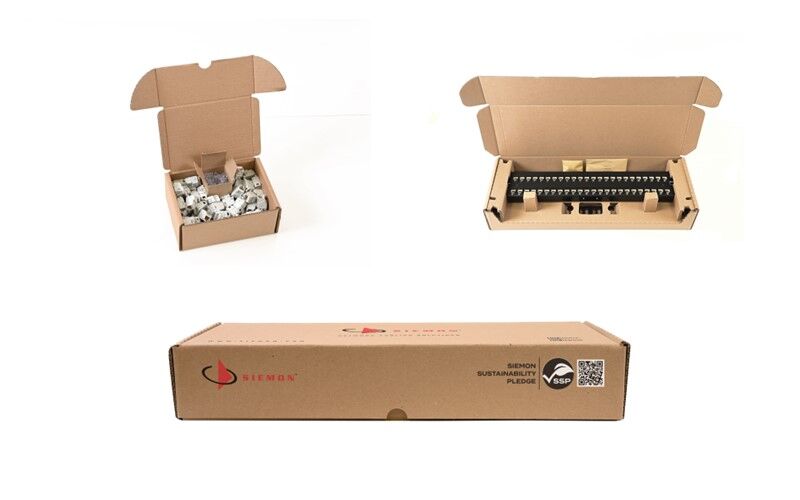For individuals and companies alike, reducing the amount of waste material we generate as consumers is one of the most immediately impactful steps we can take toward environmental sustainability. As cliched as the term “The Three Rs” is (it is the subject of a children’s pop song, for goodness’ sake), it outlines very real and effective guidelines for us: reduce what we use, re-use what we can, and recycle what we can’t.
I’d wager that for most individuals when we think “Three Rs” we’re primarily thinking about packaging: boxes, bags, bottles, cans, and those annoying plastic clamshell things. I’d also bet that most companies see it the same way. At Siemon, we’ve always put a premium on reducing operational waste of any kind, including packaging waste related to our purchased goods. Our selection process prioritizes vendors that minimize the amount of packaging material in general but also focuses on eliminating specifically problematic packing materials like single-use plastics, Styrofoam, and non-recyclable items such as bonded materials and coated pulp items. It is our goal to ensure that packaging material entering our facilities leaves only a responsible, sustainable waste reclamation stream, and never ends up in a landfill.
But as we all get a bit savvier about our “cradle-to-cradle” impact on the environment, it should become clear that companies (particularly manufacturers) need to extend the Three R packing principles beyond their facility walls and into the downstream supply chain. For Siemon, that means applying the same (or even more stringent) sustainability targets to our outbound product packaging that we demand from our inbound purchased goods packaging.

Long before Siemon products arrive at our distributors’ docks or our customers’ job sites, we’ve been at work to ensure that we’ve minimized packaging material, chosen materials with the lowest environmental impact (such as high post-consumer recycled content containers), and used materials that can be simply and efficiently recycled back into the sustainable value chain.
As part of Siemon’s long-term packaging sustainability initiative, we’ve made great strides in reducing the volume and mass of packaging we use to deliver our products. Innovative die-cut carton fixturing allows us to secure and protect product in shipping using smaller cartons and less void-fill material. Our operations and logistics teams have worked alongside our distributor partners and customers to develop order batching and bulk-pack systems to avoid unnecessary small or individual pack cartons.
We’re also actively addressing packaging sustainability at the material level. Working with our vendor partners, we’ve moved to high post-consumer recycled content cartons across our entire product line. The bulk of our shipping cartons contains at least 75% recycled material, with most being 100% post-consumer. We are eliminating all Styrofoam packing and have shifted from plastic bubble pack to recycled pulp pad pack to protect carton contents. Pending product innovations will even help to eliminate all single-use plastics from our packaging.
Our goal is simple
In the end, Siemon’s goal is to reduce the environmental impact of our operations throughout our-end-to-end value chain. When it comes to packaging, we expect our vendors not to leave us “holding the bag” with excess, unrecyclable waste materials ultimately destined for the landfill. We, in turn, work to extend that concept to our downstream partners and customers by holding our own packaging to high sustainability standards. Our goal is to ensure that when a Siemon project is complete, there’s not a trace of packaging waste to be seen – because we’ve reduced the volume of our packaging and ensured that what is left is easily and efficiently diverted from landfill and recycled back into the cradle-to-cradle supply chain.





